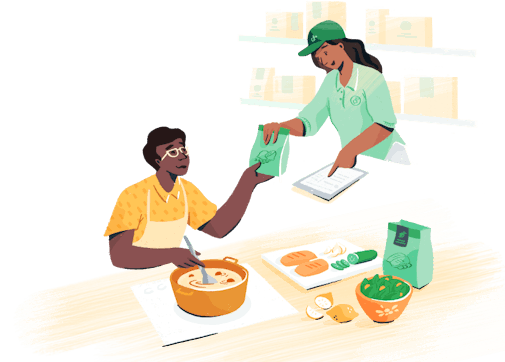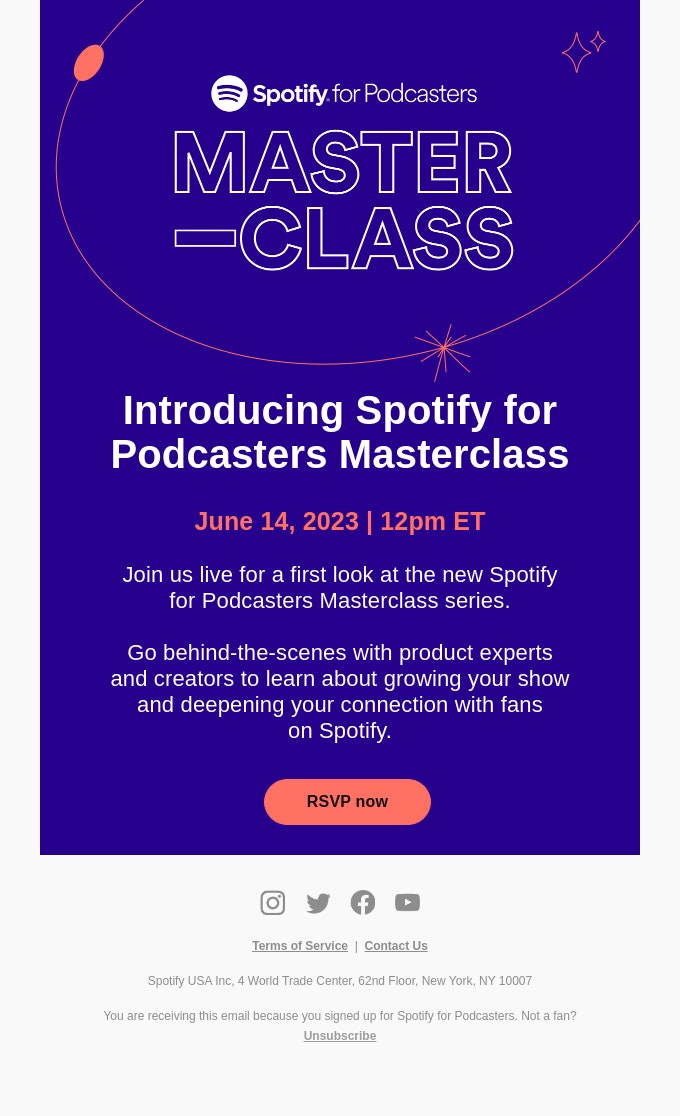Communication is about more than just reaching out. It's about connecting in a way that resonates with your audience, piquing their interest with a solution that holds promise for their specific needs or challenges. A key component of this communication process is crafting effective sales emails based on powerful, reusable sales email templates.
Many sales professionals will attest that a well-crafted sales email can be a powerful tool in the toolkit. Unlike a cold call, an email allows the recipient to engage at their own convenience, and it provides you with a platform to succinctly outline your value proposition, cultivate curiosity, and elicit responses. However, not all sales emails are created equal.
The effectiveness of sales emails typically comes down to their format, wording, and content. A compelling email needs to strike a delicate balance between being informative and persuasive while avoiding an overly salesy tone. Good sales emails don’t just push a product or service; they create an engaging narrative around how the recipient can resolve their issues or enhance their operations.
In this guide, we dig into the elements of successful sales emails and provide a selection of the best sales email templates to inspire your own outreach. Whether you're new to sales or a seasoned professional seeking fresh ideas, you’ll find actionable insights to streamline and enhance your sales email outreach engagement so your emails not only get opened but spur action.
Sales email best practices
Crafting emails that not only get opened but that also lead to meaningful engagement requires adherence to a set of best practices. In this section, we’ll discuss best practices you can use to create a sales email template (both B2B and B2C) that can effectively drive results.
1. Write engaging subject lines
The subject line is often the make-or-break factor in whether an email is opened. Crafting an engaging subject line means being clear, concise, and compelling. It should give the recipient a reason to click through, whether it's the promise of solving a problem, the opportunity to learn something valuable, or the potential to discover a tool that can make their life easier.
2. Use personalization
Generic emails get generic responses (if they get any response at all). Personalization goes beyond just using the recipient's name, though. It involves tailoring the email content to the reader’s specific needs, preferences, or past interactions with your brand. This can include referencing a recent conversion or acknowledging a challenge the reader may be facing. When building your email list, try to gather some additional personal details about new signups so you can make it feel as though you’re speaking directly to them.
3. Ethically leverage pain points in prospecting emails
Understanding and acknowledging your prospects' pain points can demonstrate empathy and insight, which are key ingredients in building trust. Of course, it's important to leverage this understanding ethically. That means offering genuine solutions rather than exploiting vulnerabilities. Frame your solutions as a means to alleviate issues in a helpful and constructive manner.
4. Integrate product or service details
While it's important to keep sales emails concise, providing a clear, brief introduction to your product or service is a must. Highlight key features or benefits that are most relevant to the reader’s needs. This integration helps them understand the tangible value of your offer.
5. Adapt proven sales email templates to suit various industries
There's no one-size-fits-all template for sales emails. A template that works wonders in the tech industry might not resonate with professionals in healthcare. Take proven templates as a foundation, but adapt them to the language, pain points, and aspirations unique to each audience you're targeting.
6. Utilize case studies and free trials in B2B sales email templates
Including case studies and free trial offers in your B2B sales emails can significantly increase their effectiveness. Case studies provide concrete examples of your success in similar contexts, while free trials offer a risk-free way for potential customers to experience your product's value firsthand. Together, they can effectively address objections and nudge leads toward taking the next step.
7. Follow up on your sales emails
Persistence, when conducted with respect for your lead’s time and interest, pays off in sales. If your initial email doesn't get a response, don't give up too quickly. Following up can sometimes be the push needed for a lead to take action, whether that's due to better timing or simply because your reminder stood out among their countless emails. A well-organized CRM can be a lifesaver when it comes to staying on top of communication history.
8. Optimize open rates with engaging email templates
Your sales email is competing with dozens, if not hundreds, of others in your lead’s inbox. You can’t afford to be boring. An engaging email is authentic, vibrant, and thoughtfully composed. It reflects the unique value you offer and why your message is worth the reader’s time.
10 effective sales email templates to get you started
Here’s a curated collection of 10 thoughtfully written sales email templates catering to various industries, scenarios, and sales cycle stages. You can use these sales email templates as a starting point to craft compelling messages, paving the way for meaningful conversations and successful conversions. Take a look, adapt them to your needs, and watch them improve your business communications in no time.
1. Cold outreach email
What it is: A cold sales outreach email is an unsolicited contact with a potential client or customer who has had no previous interaction or relationship with your company.
When to use it: A cold outreach email is used when you want to initiate a conversation with a potential prospect that may benefit from your product or service.
Why it works: The key to the success of a cold outreach email is establishing a genuine connection and focusing on addressing the recipient's needs. Such emails cut through the noise of the recipient's inbox by offering value, personalization, and an open invitation for further discussion.
Template
Subject line: [Recipient's name], I noticed something about your [pain point]
Hi [Recipient's first name],
I came across your [mention relevant content, website, or social media post] and noticed that your business might be struggling with [specific pain point].
My name is [Your Name], and at [Your Company], we specialize in enabling businesses like yours to overcome those challenges with [brief explanation of your solution]. Our clients have experienced [mention specific benefits or results your product/service delivers].
I'd love to chat and learn more about your current situation. Perhaps we could find a way to help your business achieve [desired outcome].
Are you available for a brief call next week? Let me know your availability, and I'll be happy to set something up.
Best regards,
[Your Name]
[Your Company]
[How best to contact you — phone, email, text, etc.]
2. Post-event follow up email
What it is: A post-event follow-up email is a message sent to prospects and contacts you've interacted with during a recent event, conference, or meeting.
When to use it: Send a post-event follow-up email when you want to follow up with attendees you met at an event and turn the initial connection into a potential partnership or sale.
Why it works: These emails work because they capitalize on the connection made at the event and provide an opportunity for further engagement with the lead. A follow-up email shows interest in your lead’s needs and offers additional resources to continue the conversation.
Template
Subject line: [Recipient's name], let's continue our conversation from [Event Name]
Hi [Recipient's name],
It was great meeting you at [Event Name] last week. I hope you found the event as insightful and engaging as I did!
I really enjoyed our conversation about [topic or problem related to your product/service]. As I mentioned, [Your Company] specializes in [short description of solution], which could be a great fit for your business. I wanted to share a [case study/resource/blog post] that highlights how we've helped similar businesses achieve [specific outcome]. You can find it here: [link]
If you'd like to discuss more or explore how our solution could benefit your business, I'm available for a call next week. Just let me know your availability, and I'll set something up.
Looking forward to our next conversation!
Best regards,
[Your Name]
[Your Company]
[Your best contact information]
3. Limited time offer email
What it is: A limited-time offer email is a promotional email aimed at creating urgency and encouraging potential or existing customers to take action with an exclusive or time-sensitive deal.
When to use it: A limited-time offer email is useful when you want to incentivize recipients to take advantage of a special offer or promotion.
Why it works: These emails work because they capitalize on the fear of missing out (FOMO) by creating a sense of genuine urgency while providing value.
Template
Subject line: [Recipient's name], here’s something just for you — only available until [deadline]
Hi [Recipient's name],
We’ve got some exciting news for you! As one of our valued clients/contacts, we'd like to offer you an exclusive deal on our [product/service]. But you’ll need to act soon because this offer is only available until [deadline date].
For a limited time, you can [describe the offer, e.g., get a 20% discount, a free trial, or an added feature].
To claim your [offer], simply [briefly explain the process or provide a promo code/website link].
Don't miss your chance to leverage the full potential of [Your Company's] products/services and start experiencing the benefits right away.
If you have any questions or need assistance, feel free to reach out to me at [contact info] or reply to this email.
Best regards,
[Your Name]
[Your Company]
4. Solution-focused soft sell email
What it is: This email template is crafted to promote a product or service indirectly by focusing on the solutions it offers for specific customer pain points rather than pushing for an immediate sale.
When to use it: Use this template after identifying a potential problem or pain point the prospect might be experiencing, which your product or service can solve, typically after some initial interaction or lead qualification.
Why it works: Soft selling is effective because it builds trust and provides value to the prospect. By focusing on solutions, you can establish credibility and pave the way for relationship-building, which can potentially lead to a sale.
Template
Subject line: Imagine a world without [pain point]
Hello [Recipient's name],
In working with industry leaders like yourself, I’ve noticed that [insert common industry pain point] often stands in the way of reaching [specific goal].
Imagine a day when [describe the scenario without the pain point, illustrating the benefits of your product/service]. That’s what we at [Your Company] want for you — not to just sell a product but to provide a gateway to the solution.
We've crafted [Your Product/Service] with this vision in mind, and it's amazing to see the transformation it brings. Just take a look at [customer success story/case study link], who we helped [their achievement post using your product/service].
If you're open to it, I’d love to discuss how we can help you get similar results. Are you available for a 15-minute call on [insert day/time]?
Warmest regards,
[Your Name]
[Your Company]
[Contact info]
5. Re-engagement email for lost leads
What it is: A re-engagement email aims to reactivate a lead that has gone cold or a former customer who has not purchased in a while.
When to use it: This template is used when a lead or a past customer has disengaged with prior sales attempts or hasn't made repeat purchases, and you want to reignite their interest.
Why it works: A well-crafted re-engagement email reminds the client of your company and the value you offer, potentially reviving their interest. Reaching out can rekindle their memory and lead to re-engagement based on nostalgia or previous satisfaction.
Template
Subject line: [Recipient's name], we've missed you — here's something to welcome you back!
Hello [Recipient's name],
It's been a while since we last saw you around, and the team here at [Your Company] has been thinking about you!
We understand that [insert a possible reason for disengagement or no purchase], but we wanted to share some exciting updates and improvements we've made to [Your Product/Service] that might interest you.
Also, as a thank you for being a valuable part of our community, we have a special offer just for you: [insert special offer details].
We’d love to welcome you back and support you in [specific goal or problem]. If you have any questions or there's anything in particular you're looking for, please don't hesitate to reach out.
[For businesses that are more consultative in nature, you can swap the paragraph above with this: Let's reconnect. Are you available for a quick update call this week?]
Best,
[Your Name]
[Your Company]
[Contact info]
6. Referral requisition email
What it is: A referral request email is sent to satisfied customers to encourage them to refer your product or service to others who might benefit from it.
When to use it: Send this template after a customer has made a successful purchase and expressed satisfaction with your product or service, usually after a positive follow up interaction.
Why it works: Satisfied customers are more likely to refer others due to the trust and positive experience they've had with your brand. Such emails can harness word-of-mouth to potentially drive new business.
Template
Subject line: We’d love your help to spread the word, [Recipient's name]!
Hi [Recipient's name],
First off, a big thank you for choosing [Your Product/Service]. We're thrilled to hear you've been loving the experience and seeing the impact it has made on [specific benefit].
Your opinion means the world to us, and we were wondering if you might know someone else who could benefit from [Your Product/Service] just like you have.
We've put together an exciting referral program where both you and anyone you refer get [details of referral benefits]. Sharing the love has never been so rewarding!
To make a referral, just provide us with the name and email of someone you think would love [Your Product/Service], or send them this link to sign up [referral link].
Once again, thank you for your support, and if there's anything else you need to make your experience even better, we're here for you.
Best wishes,
[Your Name]
[Your Company]
[Contact info]
7. Upselling email
What it is: An email that promotes a higher-value product or add-on, designed to increase the value of the customer’s original purchase.
When to use it: Send this when a customer has already been using your product/service satisfactorily and you have an upgrade or added feature that will enhance their experience or results significantly.
Why it works: By demonstrating added value or convenience, upselling emails can encourage current customers to invest more in a product/service that they already appreciate, thereby increasing overall revenue.
Template
Subject line: [Recipient's name], upgrade your [Product/Service Name] experience
Hello [Recipient's Name],
We're really glad to hear that you've been enjoying [Your Product/Service]. Based on your usage, we thought you might be interested in taking your experience to the next level with our [Upgrade/Higher-tiered product].
With this upgrade, you'll enjoy:
Benefit 1
Benefit 2
Benefit 3
This could be a game-changer for you because [mention how the benefits tie into their needs/goals].
To upgrade and maximize your productivity, simply click here [Insert upgrade link]. Or, if you have questions and would like to learn more, feel free to get in touch.
Best,
[Your Name]
[Your Company]
[Contact info]
8. Targeted offer email
What it is: A sales email that presents a targeted offer to a specific segment of your customer or prospect list, usually based on their previous interactions, purchases, or demonstrated interests.
When to use it: When you have a special promotion, discount, or a unique package that fits the needs of a specific group within your audience, and you want to increase conversions by making a timely, relevant offer.
Why it works: By acknowledging the recipient's unique interests or needs with a targeted offer, the message feels more personalized and relevant, which can lead to a higher conversion rate than general blanket promotions.
Template
Subject line: Exclusive offer for [Product/Service] fans like you!
Hi [Recipient's Name],
Because you're a valued [customer/client/follower], we wanted to offer you something special as a token of our appreciation.
Introducing [describe the targeted offer or package], tailor-made for [describe the need or interest it addresses]. This exclusive package includes [list components of the offer] and is available at a special rate of [offer price] just for you.
[Insert a clear call to action with a deadline for accepting the offer]
Plus, as an added bonus, if you act before [deadline], you’ll also receive [mention any additional incentive].
To redeem this offer, simply [instructions on how to redeem the offer]. But hurry, this deal is only available until [deadline].
Thanks so much for your loyalty. We hope you enjoy what we’ve put together for you!
Warmest regards,
[Your Name]
[Your Company]
[Contact info]
9. Email after sales rejection
What it is: An email sent after a prospect has decided against purchasing your product/service.
When to use it: Use this when a prospect has explicitly declined or a deal has fallen through.
Why it works: Even if the prospect rejected your offer, maintaining a positive relationship could lead to future opportunities. This email also provides an opening to request feedback to understand any factors that may have influenced their decision.
Template
Subject line: Your recent decision about [Product/Service]
Dear [Recipient's Name],
I appreciate the time and consideration you’ve given us during this decision-making process. While I'm sorry to hear that you decided not to proceed with our [product/service], we remain committed to assisting you should you need it in the future.
If you could, I’d greatly appreciate any feedback about your experience with [Company Name] and any factors that influenced your decision. We’re always looking to improve, and your insight is important to us.
Should things change or you ever have any questions, we're only a message away.
Thanks so much for considering [Company Name].
Best regards,
[Your Name]
[Your Company]
[Contact info]
10. Case study email
What it is: This email showcases how your products/services have already delivered value to other customers.
When to use it: You can send this email at any point in the sales cycle, but it's particularly impactful after you've already had initial discussions and the prospect is aware of how your offerings align with their needs.
Why it works: Proven success improves your credibility and illustrates the potential value your offerings bring to prospects.
Template
Subject line: See how [Client] [outcome achieved] from [Your Product/Service]
Hi [Recipient's Name],
I thought I'd share a success story of how [Your Company] helped [Client].
[Briefly describe the client’s problem, your solution, and the results achieved].
I’d love to explore how these kinds of results could be replicated with [Prospect's Company]. Do you have time this week to chat?
Regards,
[Your Name]
[Your Company]
[Contact info]
Adapting existing sales email examples into sales email templates
According to eMarketer, half of B2B marketers in the U.S. alone believe that email marketing is the most impactful channel on their multichannel strategy. This is a double-edged sword for those who want to use email as a sales channel. On one hand, your emails will have to be engaging enough to compete in increasingly crowded inboxes. On the other hand, there’s no shortage of inspiration to be found for creating your own sales emails. A quick look into your own inbox will probably get you a couple at least.
In this section, we’ll take a look at a handful of actual sales emails and show you how to turn them into templates you can use in your own business.
Getaway
What it is: This email provides readers a new way to connect with the company.
When to use it: You can send this email when you have a new feature to announce and want to increase feature adoption.
Why it works: Offering a discount is a tried and true way to encourage feature adoption — particularly when you’re requesting even greater access to someone through additional communication channels.
How to templatize it:
Include a relevant image with a headline that conveys the new feature’s value proposition. In the example above, the headline “Let’s keep in touch” tells readers that this new feature will give them another way to learn about Getaway’s products and services.
Here’s what your template might look like:
[Image with feature value proposition headline]
Introducing [New Feature] — [description of the new feature].
Sign up/buy/join today and receive [incentive offer details].
Plus, be the first to enjoy these perks:
Benefit 1
Benefit 2
Benefit 3
[CTA button]
Kajabi
What it is: This email is a limited-time offer that encourages readers to sign up to take advantage of a discount.
When to use it: Since this is a standard acquisition email, you would send it to people on your email list who haven’t signed up for your product. Once they’ve signed up, you can onboard them with one of the templates here.
Why it works: This email touches on pain points the target audience experiences and provides them with a solution. While it’s clearly a sales email, it offers important details about the benefits to the reader and makes it seem as though the company does care about the reader.
How to templatize it:
Once again, we’re starting with a relevant image and a headline that touches on a particular pain point — in this case, the cost of tools to run an online business.
Here’s what your template could look like:
[Image with a value proposition headline]
We know all about the challenges [your target audience] face when it comes to [target audience goal].
With [Your Company], you’ll get [what you offer] to [another target audience goal]. Check out the chart below to see how [Your Company] can save your business money.
[Chart detailing the features customers get from your solution, how much each of those features might cost from another provider, and a visual representation of their inclusion in your product.]
[Your Company] provides exactly what you need to [a target audience goal that’s focused on benefits], replacing all the separate tools you’d otherwise need to [what the audience typically does with your product].
And, for a limited time, you can get [details of limited-time offer].
[CTA button]
Spotify
What it is: This email is an invitation to a live webinar or masterclass.
When to use it: You would use this email to get readers to attend your live webinar. It could also be used for in-person events with some changes.
Why it works: This email offers a free educational opportunity for readers who are already using or who are interested in learning more about Spotify for podcasters.
How to templatize it:
Here’s what your template could look like:
Introducing [webinar/event name]
[Date] | [Time]
Join us live as we explore [topic to be covered during the event].
[Details about what attendees will get out of the event/what they’ll learn.]
[CTA button]
Crafting compelling sales email templates
We've covered a variety of best practices and templates to make your sales emails stand out. More than just elements of crafting an email, these are the building blocks of effective sales communication that, when used wisely, could redefine the way you connect with your audience.
It’s important to remember that the journey of improving your sales emails is iterative. Stay open to learning, adjusting, and re-strategizing based on how your audience responds. As you move forward, feel free to use the curated email templates included here as a launchpad while embellishing them with your own brand personality.








